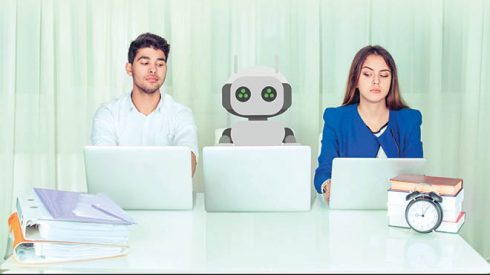
While Robotic Process Automation (RPA) was originally developed to automate time-consuming or tedious manual tasks performed by humans, today it is helping organizations significantly reduce human errors and increase productivity across key markets, while helping companies cut costs. But there’s one thing missing in RPA, and that’s the ability to be cognitively aware. That’s where Artificial Intelligence (AI) comes in.
There’s a lot of interest in RPA and AI thanks to the tremendous business benefits and competitive advantage that they deliver. While each are powerful tools in their own right, when they work together, they can provide complementary synergies.
To take advantage of this relationship, it helps to understand what each technology can offer. While RPA is often talked about in the context of AI, it is not really AI. It is designed to automate repeatable, manual tasks, such as claims, payroll or forms processing. In these cases, the RPA system would “read” paper-based forms and enter the information in the correct fields on an automated system. In medical claim records processing, for example, RPA can be used to correct a recurring error that appears in many records. Companies are turning to RPA because it frees up staff to focus on other activities. As a rules-based system, RPA also increases accuracy and helps ensure compliance. It’s becoming so popular that the market is expected to grow to more than $3 billion by 2025.
AI, on the other hand, handles tasks that require intelligence, such as speech or image recognition, decision-making or behavior prediction. It is so much in demand that McKinsey projects that it could deliver between $3.5 to $5.8 trillion in value each year. Data scientists develop algorithms based on a huge amount of data to “teach” these AI programs, and the apps learn by finding patterns in the data. As the data scientists continually refine the algorithms, the AI programs continually improve, or become smarter.
RPA can help AI apps learn
AI apps can only tackle more complex programs and achieve a higher level of intelligence by having data scientists code more complex rules into the software. RPA can be used to collect the critical data that these AI apps depend on. For example, it can conduct screen scraping to automate the collection of data from websites – such as aggregating data from the web on all the laws passed in a particular year – that can then be used in algorithms to train AI programs.
Since one of the biggest challenges of building effective AI algorithms is having lots of data, by helping to gather the tremendous amount of data that is required for AI, RPA can help speed up AI development and free up data scientists to focus on building the algorithms and training the apps.
AI can make RPA act more intelligently
Conversely, AI can be paired with RPA to enable it to provide higher functionality. RPA can evolve from collecting information and sharing that with other systems, including AI; gathering information and using rules to make decisions; to querying an AI system to determine a course of action. Take an Interactive Voice Response (IVR) system in a bank, for example. If someone calls to find out the balance on an account, an RPA system can retrieve that information. However, if an AI system is paired with it, it can tell the RPA system the steps that should be taken in handling the call. The RPA program can use information from the AI program to determine the optimal offer for a particular individual or the price point to offer a customer based on previous transactions and other relevant information, or to predict behavior.
Development issues to consider
While it makes a lot of sense to develop applications that combine RPA and AI because of the business and technology benefits they deliver, developing software for these applications creates several issues for software engineers. Because the joint development efforts require multiple teams handling RPA and AI functionality, there has to be good coordination between them. Planning and communication are critical; every action should be logged and communicated on dashboards that are available to everyone. Software developers and QA professionals need to pay specific attention to RPA, and manage it carefully because of its speed in processing information. If there is an error in the software, it could create a lot of problems very quickly.
The results of creating applications that combine RPA and AI are very compelling – enhancing the best capabilities of both applications. This allows organizations to benefit from smarter RPA programs that can handle customer interactions or predict behaviors, and enables data scientists to get the data they need to program AI apps to handle more complex problems faster, and speed up development cycles. While the joint development process will require greater communication and collaboration from multiple development teams, it opens up new opportunities for software engineering.
A new, powerful class of smarter RPA applications is on the horizon and we are just beginning to see what is possible.






